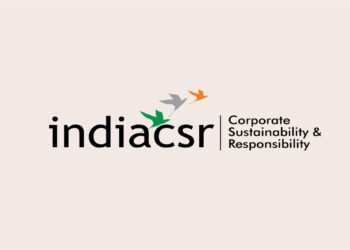GURGAON: An integrated approach is required to transform the Najafgarh Jheel which will lead to the creation of a smart city and also the connectivity will improve. We need a better strategic approach than a responsible approach. Soon we will be coming up with a white paper with all the strategies penned for transforming Najafgarh Basin and present the same to the Haryana Government.
These feelings were shared by Col. Prakash Tewari, Executive Director, DLF Foundation while addressing inaugural session of a workshop titled ‘Transforming the Najafgarh Basin’ here on August 18. He shared DLF Foundation’s Gurgaon Rejuvenation Project and also presented the various initiatives under the same.
The workshop held under the aegis of DLF Foundation in partnership with India Water Partnership and INTACH aimed to bring multiple stakeholders a common platform to identify the gaps and challenges in rehabilitation of Najafgarh basin and devise strategies to address the crisis in a holistic and sustainable manner.
The Chief Guest of the workshop was Rao Inderjit Singh, Minister of State for Urban Development. Peaking on the occasion, he said “Water conversation is essential and is has become an important concern for the future generation. Presently, we are sitting on time bomb. Alone government or private company cannot do anything to rejuvenate Najafgarh Basin. We all have to come together as the representative of Gurgaon to solve this menace. More initiatives like this should be taken up in future to engage people’s participation and make the city a more liveable place.”
Vinay Pratap Singh, Deputy Commissioner, Gurugram expressing his concern over the burning issue of the Najafgarh Drain said, “It is important to manage water at the local level itself. Our aim should be to create an environment for generating more demand for water harvesting than maintaining it regularly. Water should be re-used for irrigation, gardening or construction purpose. Public and private partnership is of immense importance in such initiatives and the corporate should utilize their funds to rejuvenate water bodies.”
Keshav Chandra, Secretary, Environment, Delhi, said, “Urban Planning is of utmost importance to avoid sewage being drained in water bodies. The need of the hour is to look at watershed management. Traditional village ponds should be taken care of and encroachments should be removed over there. After cleaning of the water bodies it is important to create recreational value of the water body.”
The workshop also witnessed interactive presentations which highlighted the critical urban water scenario of Gurugram. Chaired by AB Pandya, former Chairman of Central Water Commission, the presentations identified water logging and water scarcity as burning issues that need to be immediate addressed.
The second session of presentations was chaired by Avinash Tyagi, Secretary General, International Commission on Irrigation and Drainage. The session began with Rajat Bhargava from Bombay Natural History Society drawing attention to the unique biodiversity of Najafgarh Jheel.
The presentation by Suresh Babu, Director WWF, Wet Lands & Rivers deliberated upon means to revive Najafgarh Basin by taking lessons from Ram Ganga. The workshop also saw the laying of plan of action for rejuvenation of Najafgarh Drain.
Moderated by Manu Bhatnagar from INTACH, the session saw intensive brainstorming on the issue by experts from diverse fields.
Najafgarh Drain
Najafgarh Drain is a natural channel known as ‘Sahibi River’ that originates in the Aravali hills in the Alwar – Rewari region of Rajasthan and Haryana. The drain traverses a length of 41 km before falling into the river Yamuna in the northern part of Delhi.
Historically, it has served as a drainage network for storm water for parts of Haryana and Delhi. The drain along with its catchment are forms a rich natural habitat for numerous species of flora and fauna. However, due to increasing urbanization, Najafgarh Drain is currently the largest sewage carrying drain in Delhi-NCR region.
It discharges about 2,000 MLD of waste water into river Yamuna out of which 70% remains untreated. Due to infrastructure development in the catchment area of the drain, the runoff generated from the region has increased manifold. This has led to overutilization of the drain, the effect of which is exacerbated by poor management of the drains itself. The floods have resulted in severe drinking water and soil contamination in the region.



















